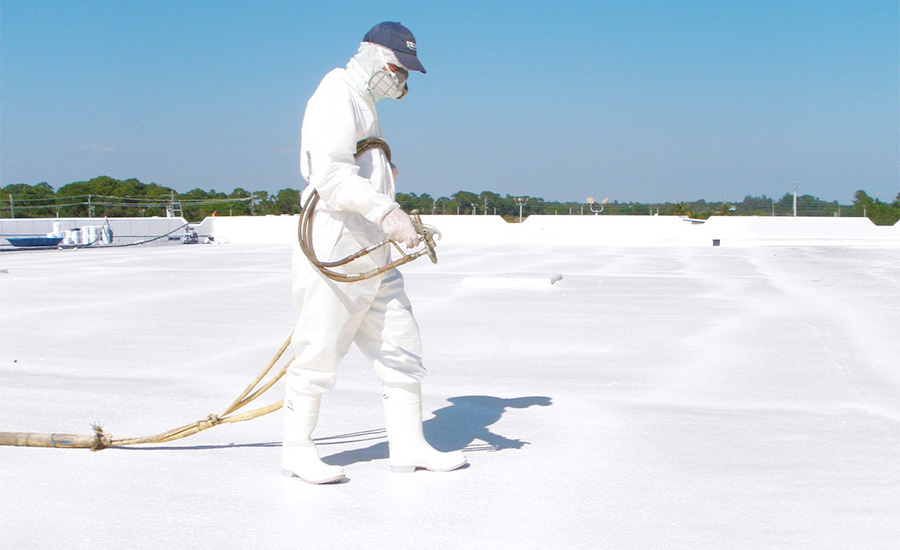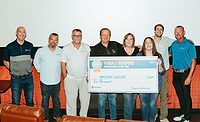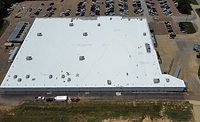Coatings
Coatings Q&A with KARNAK


Chris Huettig
National Director of Technical Services
KARNAK
The supply chain issues impacting the roofing industry following the COVID-19 pandemic have eased and though record inflation still persists, it has started to slow.
While economic uncertainty is rarely good news for roofers, there is an opportunity for contractors looking to capitalize on perceived fears of stalled capital expenditures by focusing on coatings.
RC asked several leaders in the roof coatings space about the state of the coatings market, the opportunities for roofing contractors, and what their companies are planning for the future. Here’s what Chris Huettig, National Director of Technical Services with KARNAK, had to say.
RC: How would you describe the state of the roof coatings market today?
CH: The roof coatings market is strong and continues to ride the growth spurred by the pandemic when new roof components were experiencing long back orders and coating raw materials were readily available.
Roofing contractors needed to continue caring for their customers, so they looked to maintenance, repair, and restoration with coating systems to help their building owner clients. Advances in raw materials continue to help manufacturers meet industry demands and provide options for extending roof service life.
The drive to build more resilient roofs has created space for coatings which promote repair and maintenance to reduce unnecessary waste going to landfills.
RC: How does your company or key product fit into that discussion?
CH: As a manufacturer of products for roof repair and maintenance and roof coatings we have the solutions contractors need for maintaining almost every type of low-slope commercial roof system in the market. We offer several coating chemistries for all types of budgets. It is not a one-size fits all approach.
RC: Are you still feeling any impacts of the materials shortage?
CH: Fortunately, materials shortages really did not affect us regarding availability so much as they affected new roof components. The variety of coating technologies we offer allowed us to continue offering solutions for contractors to install. Raw material availability currently is steady for the coatings industry.
RC: Any lessons learned?
CH: The importance of following core values of working closely with raw material suppliers, having approved secondary sources, and sound inventory management were necessary and continue to be leading principles to hedge against shortages and disruptions.
Regarding the industry, we found contractors wanting more training on qualifying roofs and application procedures to set themselves up for success and make informed decisions.
RC: What are the chief misconceptions about coatings in the roofing market today?
CH: Today’s roof coatings are superior in quality and performance than those of the past so most misconceptions have been dispelled. Any remaining concerns can generally be overcome by educating and training. Our company has placed a large emphasis on training in-person with hands-on exercises as well as online learning programs through an LSM portal.
RC: Any message to roofers not in the coatings market?
CH: If you have not looked at adding coatings to your offering, you are missing a key piece of the repair and maintenance market that helps provide steady revenue and funnels leads for new roofing. Contractors can diversify and shield their business from economic downturns by providing coatings restoration as part of a proactive maintenance plan.
RC: What other challenges do you foresee impacting the coatings market in the next year?
CH: Continuing to meet the expectations of contractors and building owners. Over the past three years, coatings have seen tremendous growth in the number of contractors adding them to their solution offering, and acceptance by the building and real estate industries. Manufacturers must continue supporting their contractors to help them maintain high-quality installations that provide value to clients.
RC: How are you contributing to the sustainability/resiliency conversation in roofing?
CH: Roof coatings have a prominent role in the sustainability and resiliency conversation. The ability to maintain and restore roofs are key advantages coatings offer towards sustainability. Coatings offer solutions to repair, seal, maintain, and extend the service life of qualified existing roofs which reduces unnecessary waste to landfills. Coatings extend the service life of functioning construction materials already in use in the field. Highly reflective roof coatings improve energy efficiency of existing and new roofs. Our company continues to look for ways to expand our capabilities and investment in developing high performance, environmentally friendly products that extend the life of the roof and offer fire resistance while improving energy efficiency and water run-off quality.
RC: What are your biggest concerns looking ahead?
CH: Setting expectations and educating on the importance of qualifying a roof with the understanding that not every roof is a candidate for coating. Moisture surveys should be done on all roofs, except metal, to aid in qualifying whether a roof can be coated or not. Coatings applied to roofs that are wet internally will not perform as intended leaving contractors and building owners dissatisfied and less likely to consider them an option in the future. Manufacturers must continue to educate and train their contractor partners so we all collectively raise the bar for coatings.
RC: What are you proudest of about your organization in 2023?
CH: I am proud of our ability as a company in meeting market demands through hard work, from our plant personnel all the way to our sales team, we have all stepped up to give our best. As a family-owned, women-owned business we continue to remain true to our principles of manufacturing the highest quality, sustainable roofing and building solutions while reducing the environmental impact.
Looking for a reprint of this article?
From high-res PDFs to custom plaques, order your copy today!






